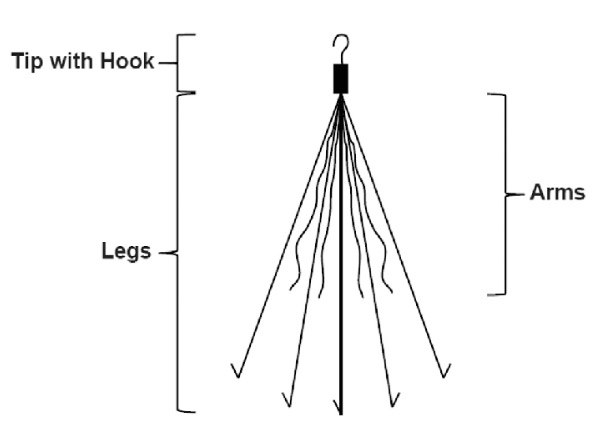
Inferior vena cava (IVC) filters are used to prevent pulmonary emboli (PE). IVC filters are recommended for patients who are at a high risk of developing PEs but cannot take blood thinners. They are also an option for those who take blood thinners, but continue to form blood clots. Before you decide that an IVC filter is best for you, however, there are severe risks you should be aware of.
Misplaced Filter

As you can see in the picture above, an IVC filter has a number of legs that jut out from its top. These legs are collapsed when the filter is passed through the catheter for insertion, but then they open once the filter is placed inside the inferior vena cava and attach themselves to the wall of the vein. Blood flows through the inferior vena cava vein from the bottom of your body up to your heart, so the filter is placed exactly as it is shown above, and when the blood travels up the vein, it passes through the filter. Any blood clots that have formed are caught in the filter’s arms, and the filter prevents the clot from traveling to the lungs.
While the legs are the heart of the IVC filter, they can cause severe complications. If the legs get crossed or tangled, the device will not work. If the legs break off, they can travel to the heart. If the legs do not open properly upon placement, the entire device can become dislodged and travel to the heart, which is a very severe complication known as migration, and it can be fatal.
Additional side effects of IVC filters are thrombosis (blood clots), perforation, and failure. Ironically, patients who have IVC filters implanted are more likely to develop clots. Perforation occurs when the legs of the filter penetrate the walls of the vein. Perforation is typically non-symptomatic. It can possibly lead to internal bleeding, that is incredibly rare. The filter fails when it simply doesn’t stop the clot from passing through the vein. It is also possible for the filter to stop too many clots, which buildup then interferes with the flow of blood to the heart.
Filter Materials and Migration
According to the Texas Heart Institution Journal, migration has been a rare complication, but new IVC filter materials are leading to an increase in the risk. Migration is the most severe complication of an IVC filter. If the entire filter dislodges, it can travel to the heart and cause tachycardia. Tachycardia occurs when the heart beats over 100 times per minute. A normal heartbeat is anywhere from 60-100 beats per minute.
A recent switch in materials is likely to blame for the uptick in migration. IVC filters are now being made from a lighter, more flexible alloy material in order to make them easier to insert. However, that increased flexibility likely means the filter is moving more inside the vein, which could result in the filter becoming dislodged.
If you or a loved one has been harmed by an IVC filter, please contact a personal injury attorney in your area who is taking on these complex defective medical device cases. Product liability claims are one of the more complicated areas of personal injury law, and you want to contact a lawyer before the statute of limitations in your state expires.
